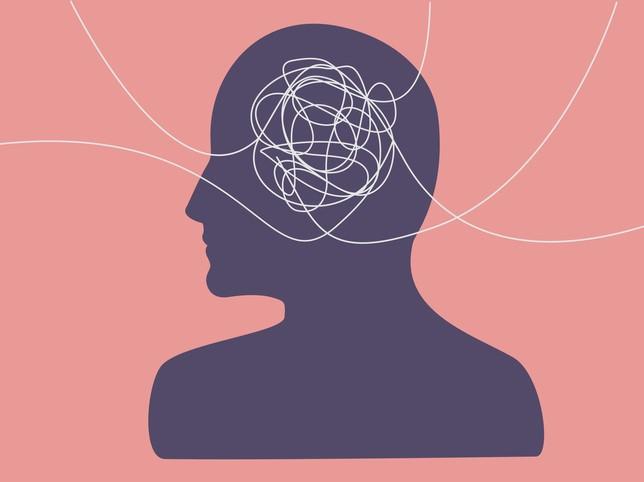Trigger warnings for content are what forecasts are for rain; they prepare us to weather distressing experiences. In a higher education context, these warnings allow students to choose if and how to engage with the course content, such as by employing emotional management skills, refraining from a discussion or leaving the classroom. However, the balance of benefits versus risks of using trigger warnings in classrooms has become a point of contention.
Triggering according to whom?
Classrooms should be judgement-free zones, yet when implementing trigger warnings, the instructor subjectively defines what they consider to be triggering, but we don’t know all of our students’ idiosyncrasies so can’t always know which buttons to avoid pushing.
If a student’s trigger is not prefaced with a warning, they may feel that the classroom isn’t inclusive or safe. Conversely, if an instructor tacks warnings on to all content that has the slightest potential to harm, it trivialises trauma and dilutes the authenticity of these warnings.
Perhaps trigger warnings might be helpful for all students, with or without histories of significant trauma, in the way that providing sufficient colour contrast on course materials increases readability for all students, whether they have a visual impairment or not. Akin to this, we accept when television shows and news outlets warn us that “viewer discretion is advised” whether we personally need the warning or not.
Psychologically safe or unsafe?
Rates of mental illness among students have been rising. Trigger warnings can reduce stigma and increase accessibility to course content by forewarning students to set up strategies to safely engage with content. Kate Manne in The New York Times writes that not providing trigger warnings is “akin to occasionally throwing a spider at an arachnophobe”. This resistance may be tied to the medical hierarchy where physical illnesses and trauma are still seen as more legitimate than mental illness and trauma.
However, adding trigger warnings to course content does not lower anxiety, a recent meta-analysis of studies worldwide found. Warnings can even raise anxiety by activating a fear-loaded, anticipatory “brace yourself!” feeling and removing an opportunity to build resilience. Avoidance of distressing stimuli is a central symptom of anxiety disorders such as PTSD and phobias, with exposure therapy being a common antidote. Furthermore, warnings will lower anxiety only if the student has sufficient time between the warning and the trigger to acquire and implement necessary support and resources. That length of time differs from person to person, and a student won’t have their therapist sitting beside them in the lecture hall.
Trigger warnings might also provide a false sense of empathy and safety. Similar to land acknowledgements, trigger warnings may feel like an obligatory, disingenuous action if the instructor hasn’t done the work to become educated and committed to “do better”. Additionally, they aren’t usually equipped with the skills or sufficient campus resources to support students, nor is it within the scope of their responsibilities.
Protecting whose autonomy?
Trigger warnings provide students with the autonomy to make informed decisions about if and how they engage with triggering content. But what about instructors’ autonomy and freedom of speech? Universities are settings of rich discourse that encourage students to think critically and push the boundaries of their minds. We must tease apart the difference between discomfort caused by a trauma response or cognitive dissonance, of which the latter is necessary to grow intellectually. We must also keep in mind that trigger warnings are intended to allow students to safely engage with, not shield them from, distressing content. Although this may mean leaving the classroom for some, which disadvantages learning in another way.
A sign of the times?
Perhaps trigger warnings are indicative of having Generation Z students in our classrooms, and related factors such as mental illness rates rising and the increased focus on consent and boundary-setting. However, sometimes the pendulum may swing too far into “cancel culture” whereby an instructor’s entire career can come crumbling down because of the inclusion of one singular subjectively triggering piece of content.
Trigger warnings also feed into the perception that Generation Z students are being coddled and bubble-wrapped. As Harold H. Klapper of The Harvard Crimson writes, “The real world is not curated for emotional stability.” Life doesn’t come with trigger warnings! A classroom can be a safe space for students to practise the skills necessary to build resilience and better handle the harsh realities of our world.
- Resource collection: Well-being in higher education
- Recognising and dealing with bullying on college campuses
- Managing empathy fatigue as a teacher
A path forward…
Beyond trigger warnings, there are many other ways that instructors can create safe learning environments and help foster their students’ wellness, such as the following:
- Conduct a risk-benefit analysis of your course materials. Is content used to hook students with sensationalism despite adding little pedagogical purpose? Can your learning outcomes be achieved with alternatives that are less emotionally charged?
- Reconceptualise your course materials with a universal design for learning (UDL) lens. Give students a choice of ways to engage with course content, such as by using captions and alt-text if audio and images are too triggering, or by having an online module or video of the potentially triggering content so that students can work through it on their own pace and in the privacy of their home. You can also have students choose their own topics for essays and presentations and what to read from a selection of options each week.
- Include a blanket statement or content note in your syllabus alerting students that the course discusses potentially distressing topics and provide a list of resources in case they need assistance when engaging with those topics.
- Reconsider including attendance and participation in course grades. A student shouldn’t be inadvertently penalised if their coping mechanisms involve the need to leave the classroom or refrain from participating in a class discussion.
- Use trauma-informed pedagogical methods such as using mindful language, building trust and encouraging open communication.
Before sharing potentially distressing content, scaffold it with a high-level contextualisation of the topic and explain how the content connects to learning outcomes.
Make time for breaks during or after exposure to potentially distressing content, as well as group debriefs or personal reflection activities after.
If learning is supposed to ignite a fire in our students’ minds, then we need to ask ourselves whether our choice of course content and use of trigger warnings are like pouring gasoline on the fire, or if it burns away cognitive dissonance within a safe environment, sparking enlightenment and growth.
Daniella Sieukaran is a senior educational developer (curriculum) at Dalhousie University’s Centre for Learning and Teaching and teaches in the department of psychology and neuroscience.
If you would like advice and insight from academics and university staff delivered direct to your inbox each week, sign up for the Campus newsletter.




comment